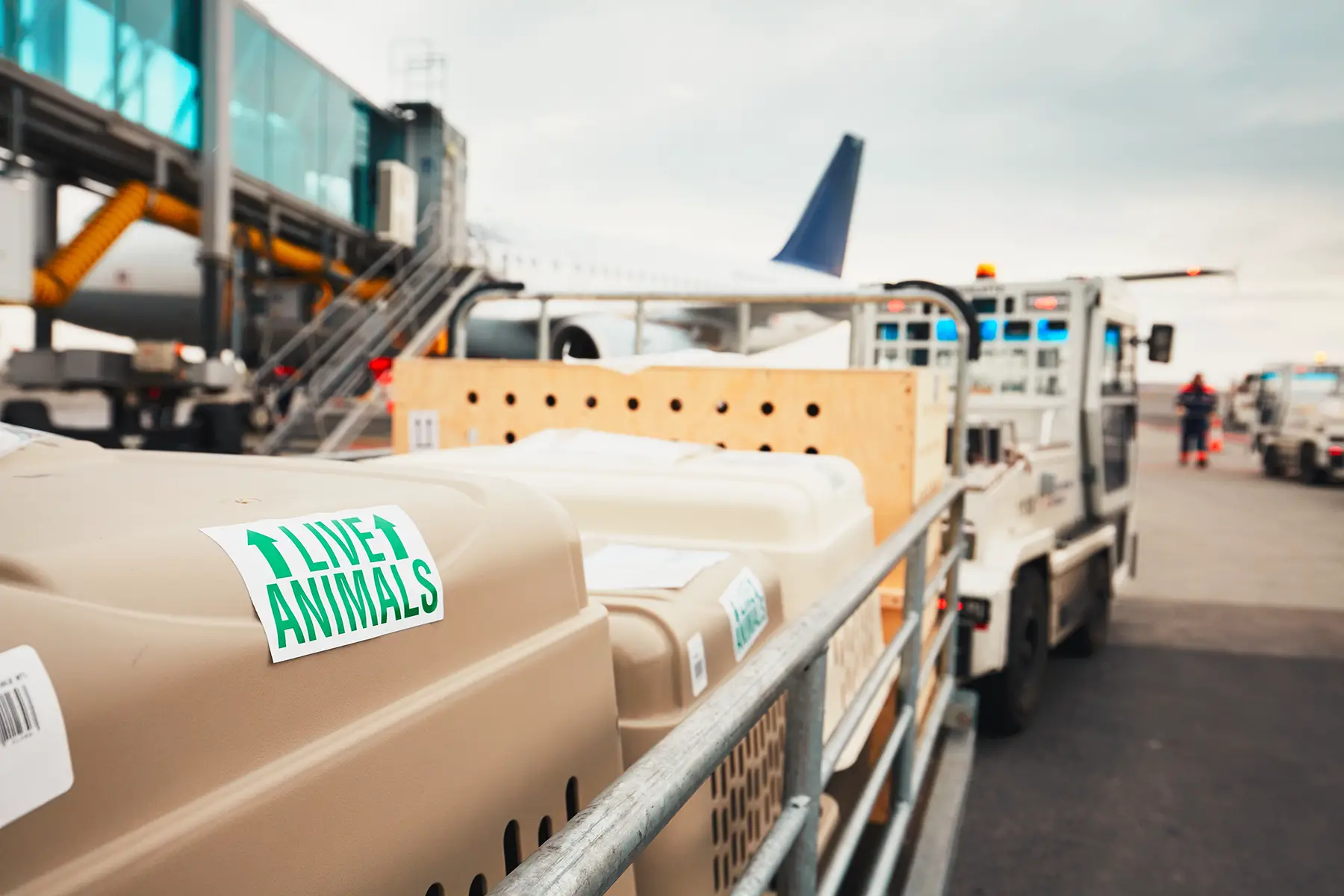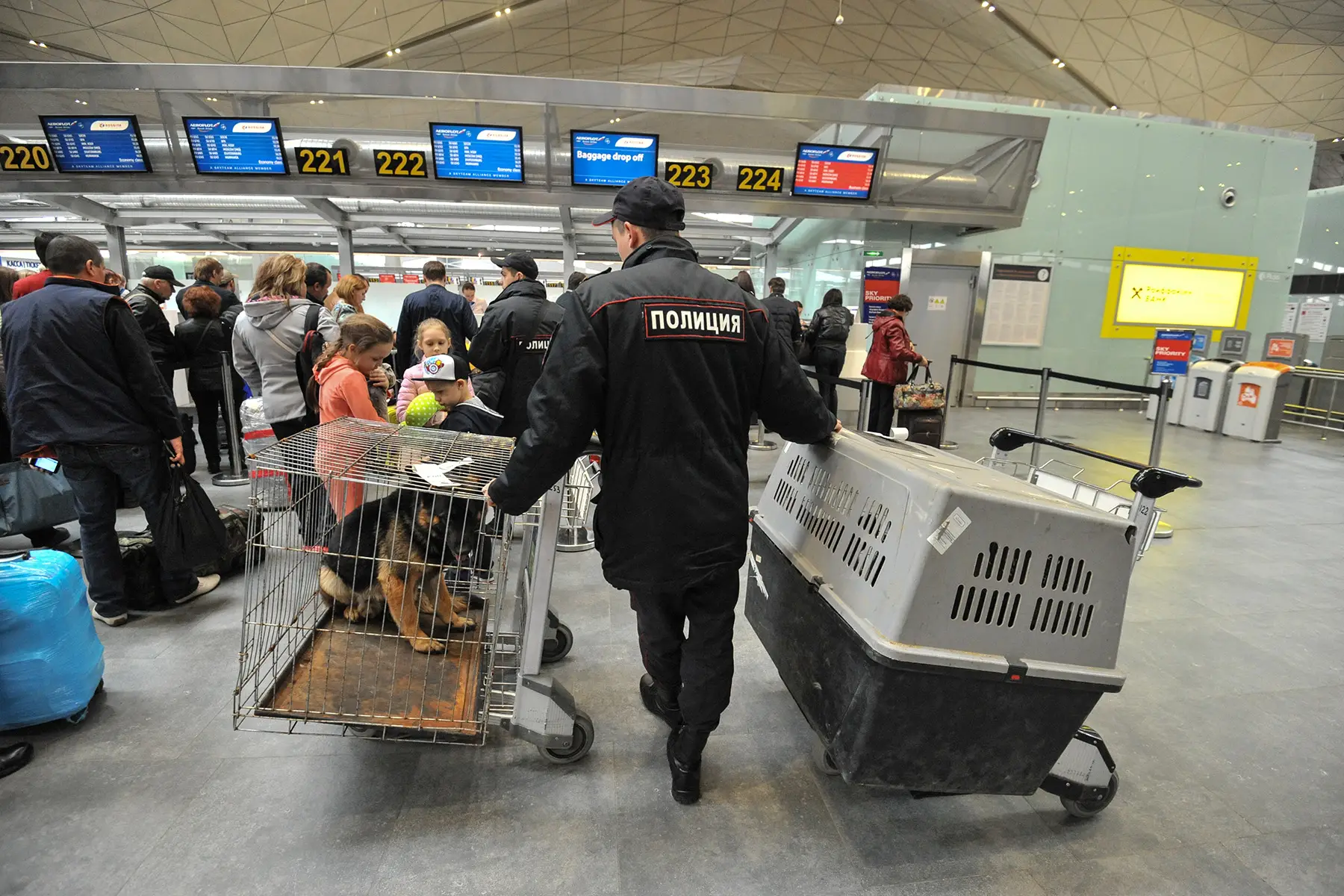Out of the laundry list of things that expats have to organize before starting the expat life, handling the family pets often inspires the most stress. For pet owners, pet relocation to a new country can cause a lot of headaches; moving, quarantining, and registering your pet in your new home country are all stress-inducing. When moving your pet abroad, you need to make an informed decision as to whether your pet is up for the trip. Most pet owners treat Fido or Fluffy like another member of the family, with birthday parties and stockings full of rawhide hanging on the mantle during the holidays. These pet owners come from the school of thought that a pet is not just a pet; they’re a beloved member of the family, an integral part of the home, and a loyal best friend.
Relocation counselors oversee the move of this trusty companion. It’s not always just a matter of handing off the animal to a pet relocation company for door-to-door international moves; there are a number of moving parts at work, with different laws for each country. Knowing how the process works will ease any concerns about your pet’s upcoming move and can facilitate a smooth transition for your four-legged friend.
- How does pet relocation work?
- Global standards for pet relocation
- Understanding the risks of pet relocation
- Why hire a pet relocation expert?
- Preparing your pet for the move
- Tips for transporting snub-nosed dog breeds
- Plane travel for pets
- Navigating import requirements
- Restrictions on importing pets
- Home at last
How does pet relocation work?
Pet relocation companies boast the ability to serve the entire world. The practice itself is fairly straightforward; a relocation agency typically picks up your pet at your home, checks the pet in at the departure airport, clears the pet through customs on arrival, and delivers the pet to their owner’s new home. Pet relocation specialists are also responsible for selecting appropriate flight arrangements, carefully reviewing the import and export documents, and counseling the owner about the intricate details of the pet’s move.
Some pet relocation services arrange door-to-door moves by opening offices at major hubs or franchising their businesses. However, a pet isn’t always traveling to and from the main ports of entry; sometimes, it’s necessary to facilitate customs clearances or deliveries in more obscure cities and countries.
Global standards for pet relocation
Most reputable pet relocation companies are members of the Independent Pet and Animal Transportation Association (IPATA). The association regulates and monitors the pet transportation industry by setting ethical standards and overseeing the performance of its members. As part of their membership, companies can access a network of pet transportation professionals worldwide that have guaranteed reputations for the services they provide.
IPATA is an organization of pet transportation professionals: local pet taxis and veterinarians, major corporations, freight forwarders, and customs brokers. Because of IPATA’s standards for membership, affiliates can safely coordinate door-to-door service for the most precious of cargo. International requirements vary from country to country, so working with a quality pet relocation company that is up-to-date on the latest import requirements is critical.

These intricacies often affect the overall cost; unfortunately, many people underestimate the rates surrounding door-to-door relocation for a pet. The cost of the pet move consists of the ground transportation to and from the airports, the documentation and import fees, and the air freight charges for the pets. When pets travel as cargo, airlines generally charge for the weight of the travel crate, which sometimes means that the cost of a one-way international flight for a pet costs the same as a first-class round-trip ticket for their owner.
Understanding the risks of pet relocation
Some pets that most pet relocation companies consider to be at-risk when traveling. Older, infirm dogs and cats can travel, as there is no age limit. However, it’s always best to seriously consider the amount of stress an elderly pet can endure. High-anxiety pets also pose a risk for hyperventilation and injury to themselves if they are not properly crate trained and conditioned ahead of time. Ultimately, it’s up to the pet owner’s discretion to decide whether to fly with their pet after consulting with a pet relocation specialist and veterinarian.
Snub-nosed dogs, such as pugs and English bulldogs, are at an elevated risk for traveling. This is due to their delicate respiratory systems, which can become impaired under high-stress situations. The length of travel and the pet’s individual personality contributes to the amount of risk.
Some pets have natural difficulties traveling. The following breeds of dogs and cats are susceptible to things such as heat stroke or breathing problems when they’re exposed to stress or extreme heat; this is often due to hereditary respiratory problems.
Dog breeds that are at-risk for complications while traveling
- Boston Terrier
- Boxer
- Brussels Griffin
- Bull Terrier
- Dutch
- English Bulldog
- English Toy Spaniel
- French Bulldog
- Japanese Chin
- Japanese Pug
- Lhasa Apso
- Pekinese
- Pug
- Shih Tzu
Cat breeds that are at-risk for complications while traveling
- Himalayan
- Persian
Why hire a pet relocation expert?
Many myths surround pet safety and air travel; this perpetuates anxieties that a pet owner has when they first start thinking about moving their pet. Most of the horror stories about pets flying are a direct result of pet owners attempting to move their pets without assistance. Anyone who has ever tried to highlight their hair using an at-home kit or build a deck after picking up some lumber at the local hardware store knows that some things are better left to professionals. Pet owners should be aware that a pet relocation expert means their pet is in experienced hands. For professional pet relocation companies, their duty is to ensure that every pet arrives safely and without incident.

The risk of extreme temperatures affecting the pet’s safety is one of the most common concerns among pet owners. Many airlines will even embargo pets during the winter or summer months. However, most reputable pet relocation companies work with airlines to keep pets in climate-controlled environments for the duration of the flight. Your pet is not exposed to inclement weather, which allows companies to relocate pets worldwide and year-round.
Preparing your pet for the move
Dogs escaping from or getting hurt while in their crates is an example of why pet relocation companies emphasize to clients that they crate-train their pet in advance. Some relocation companies even arrange crate-training classes to acclimatize your pet.
It’s important to contact the pet relocation company as soon as possible. The more time the pet spends getting accustomed to their new crate, the more relaxed they’ll be while traveling.
Tips for transporting snub-nosed dog breeds
There are special considerations required for snub-nosed dog breeds, such as:
- Use a larger travel crate than normal (10–15 centimeters of clearance on all sides)
- Use a travel crate with ventilation on four sides
- Get the dog used to the travel crate by working on crate-training the pet before the move
- Provide plenty of water for the dog before, during, and after the flight
Plane travel for pets
There are three different ways a pet can travel on an airplane: with the owner in the cabin, as accompanied (or excess) luggage in the cargo hold, or as manifest cargo (typically without the owner).
Most owners want to take their pets in the cabin. Unfortunately, because of airline restrictions on weight and size limits (as well as government restrictions for international imports), pets rarely qualify to fly in the cabin. However, if care is taken in choosing the right airline, the cargo hold where the pet travels is pressurized and climate-controlled. This means your pet travels in comfort, even when apart from their owner.
While direct flights always are ideal, direct routing is not the best way to make a decision as to the airline on which the pet should fly. Pet-friendly airlines (KLM is one example) have cargo programs designed to care for four-legged travelers.
Many pet-friendly airlines have kennel facilities at their main hubs. Here, local staff maintain the well-being of pets by giving them food and water. They also have on-site veterinary services available if necessary. However, some airlines don’t have proper facilities set up to take care of a pet in the case of a delay or emergency.
Navigating import requirements
For a pet owner making an international move, the idea of sending their pets abroad seems daunting at first glance. Import requirements and quarantine restrictions can be overwhelming. Each country has its own import and export requirements for live animals. International relocation for pets, just like their human counterparts, requires months of advance planning and careful attention to paperwork details. The most common misconception among pet owners concerns quarantine facilities and their levels of care.

Countries with unavoidable quarantine periods (e.g., Australia, Singapore) have safe and clean areas for pets to stay. Singapore’s quarantine facility even has visiting hours, when owners can take their pets outside to designated pens for exercise. These facilities often fill up months in advance, though; a pet relocation expert will help secure a quarantine reservation ahead of time.
Other countries (e.g., Japan, the United Kingdom) have mandatory six-month quarantines. However, home quarantines are an alternative option for some countries. In order to complete a home quarantine, your pet must receive a series of rabies shots followed by a blood test. After this, the pet waits out the requisite amount of time at your current home prior to traveling. This also requires ample advance planning; careful attention must be given to the order of the inoculations.
Restrictions on importing pets
Certain countries restrict the types of animals that can be imported and exported. For example, many countries have banned American Pit Bull Terriers outright; this is due to their aggressive reputations. Switzerland doesn’t allow animals with docked ears and tails into the country without proof that the owner of the pet is actually moving to Switzerland. Indonesia doesn’t permit any pets from countries that aren’t rabies-free into its own rabies-free zones; the United States and Canada are not considered to be rabies-free.

Import and export policies get thorny when dealing with exotic pets, such as wild birds protected by international trade laws. Additional restrictions apply to exotic animals. This is due to the fact that, if the owner ever needs to move the pet again, they need to demonstrate that the animal was brought into the country legally.
Home at last
After all of the stresses of moving, pet owners are happiest when their pet arrives safely arrives at their new home. Through careful planning and open communication with a pet relocation agency, your pet will travel safely, soundly, and in accordance with the laws of your new home. From Almaty to Amsterdam, pet owners around the world will agree; their house is not a home until their best friend is resting beside them.




